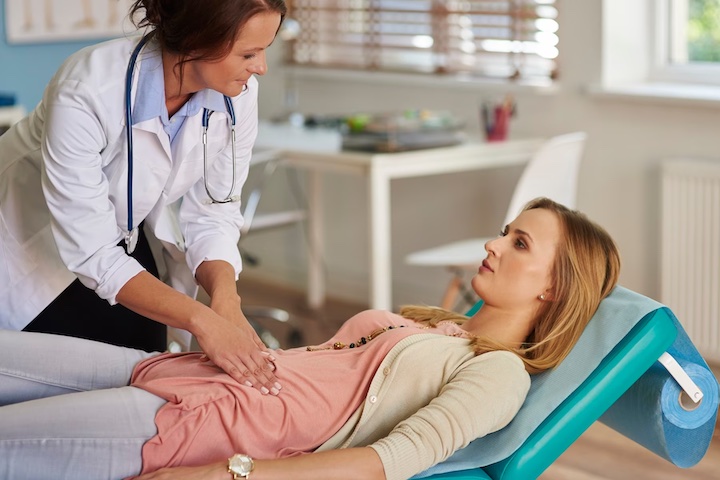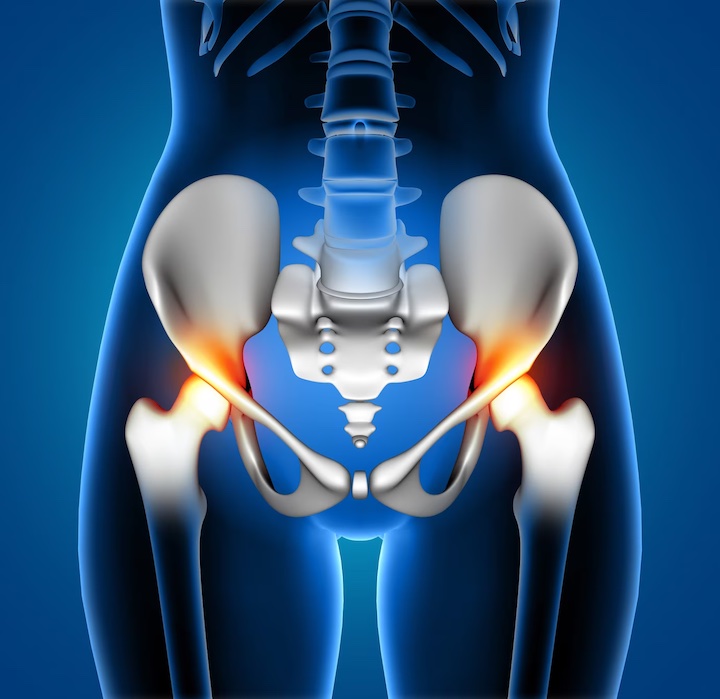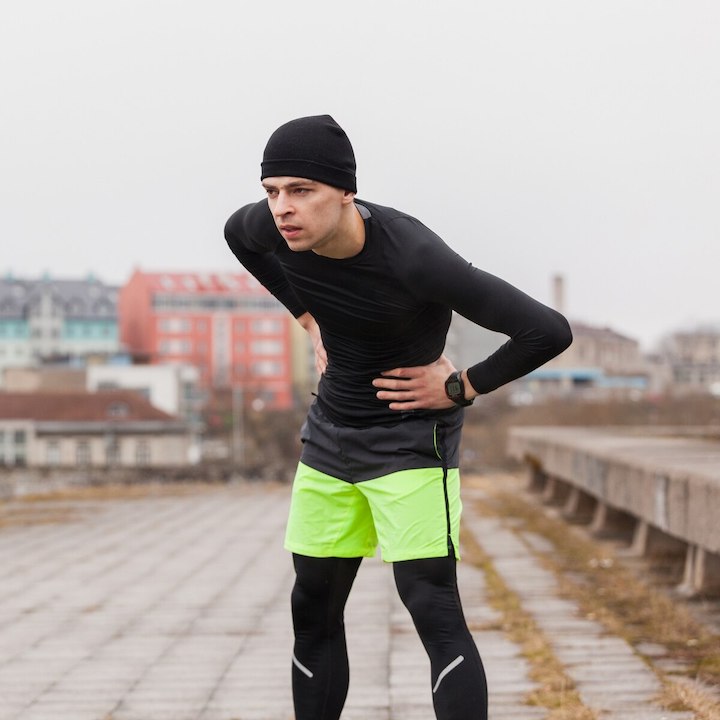Hip pain is one of the most common musculoskeletal complaints, affecting people of all ages. Causes range from overuse to chronic health conditions. Thankfully, treatments are available that can help reduce discomfort and get you back on track – both medical and natural.
The hip joint is a complex combination of bones, muscles, ligaments, and tendons that work together to enable movement. Located where the thigh bone (femur) meets the pelvis, this ball-and-socket joint is formed by the femur head entering the acetabulum of the pelvis.
Pain in the hip flexors can be caused by tightness or weakness from overuse or lack of use in these muscles, as well as other structures such as tendons and ligaments. To help prevent and reduce hip pain, stretching and exercises specifically tailored to the individual should be done to increase strength and flexibility in the area.
Participating in activities that promote freedom while limiting joint restrictions, such as swimming or yoga, is beneficial.
Feeling discomfort in your lower body? It could be one of several types of hip pain. Hip pain when walking, or from exercising, may vary from mild to severe and require different treatments.
Usually, pain in the hip when walking or engaging in any activity is caused by overuse or injury to the joint and the muscles that surround it. If the pain radiates down your leg, it may be indicative of a pinched nerve or sciatica. Before trying any physical therapy, it’s important to consult with a doctor.
Depending on the severity of the condition, medications and lifestyle changes may also be advantageous in alleviating discomfort. Taking regular walks and avoiding high-impact activities can help you stay active without putting extra strain on the hips.
Hip discomfort is often due to overwork or damage to the joint and surrounding muscles. Possible causes of hip pain include:
These are just some of the potential causes of hip discomfort. Identifying and treating these issues can lead to greater freedom and improved mobility.
Diagnosing hip issues can be a difficult process, leaving you feeling discouraged and dispirited. To accurately identify hip pain, a healthcare provider will ask about your medical history, perform a physical exam, and possibly order imaging tests.

Photo Credit: G Point Studio, Freepik
Your doctor may also inquire about the activities that cause pain in your hips or if you experience pain when sleeping or sitting. Certain stretches may also be recommended to assist in relieving hip pain symptoms.
Depending on the diagnosis, treatment options for hip pain could include medications like anti-inflammatories or steroid injections; lifestyle changes such as exercise therapy; or surgery. With the right diagnosis and treatment plan for your particular requirements, you can feel empowered to reclaim freedom from your pain.
Treating hip issues can be tough, but some home remedies may offer relief. There are many strategies you can attempt at home to help ease your discomfort. From the best hip exercises to avoid, to how to reduce hip discomfort while sleeping, and even yoga for pain relief.
You can attempt many strategies at home to help ease your discomfort. To guarantee a good night’s rest with minimal interruption from your hip issue, finding the best mattress for hip pain in Australia for your situation is essential. This will help decrease pressure points and enhance your sleep quality.
Furthermore, stretching routinely and making lifestyle changes such as lowering stress levels and avoiding activities that worsen the condition can also be beneficial in managing symptoms of hip pain.
If you’re experiencing unrelieved pain in your hips, several non-surgical treatments can help provide relief. These include physical therapy to build strength and flexibility, hot or cold therapy to reduce inflammation and pain, massage to loosen up tight muscles and promote healing, exercise such as walking, swimming, yoga, or light jogging, and stretches targeting hip flexor pain.
Maintaining good posture, using proper body mechanics when lifting heavy objects, and having correct ergonomics are important. Yoga has certain poses that can aid in relieving hip pain by opening up the hips. Taking supplements like glucosamine or fish oil can also help reduce joint inflammation. Dedication and care to these non-surgical treatments can bring significant improvement in reducing pain.
If lifestyle changes and non-surgical treatments fail to bring the relief you need, consider surgical options for your affected joint. Surgery offers the potential to reduce hip pain at night, hip and down leg pain, left side pain above the hip, and hip & groin pain.

Photo Credit: Kjpargeter
Surgeons may perform arthroscopy, resurfacing, or replacement surgery depending on your condition. Arthroscopy is used to repair torn cartilage or ligaments in the joint, while resurfacing may replace damaged surfaces of bones with metal or plastic components. Replacement surgery involves removing parts of the affected joint and replacing them with artificial components.
Recovery times vary depending on the type of procedure but generally range from four to six weeks after surgery. Though this may seem daunting, it’s vital to remember that these surgeries often successfully restore mobility and reduce discomfort in the long run.
Physical therapy can help you regain strength, improve flexibility, and restore movement to your hip joint so that you can get back to living life pain-free.
Exercise for hip pain is an essential part of physical therapy and includes range-of-motion exercises, stretching, and strengthening exercises for the abdominals, glutes, and other muscles supporting the hips.
Hip flexor pain treatment may also include core stabilisation exercises that train muscles to work together in a stable environment. Squatting with proper form is an effective exercise used to reduce hip pain when running or walking.
A physical therapist can guide the best type of exercise for your individual needs and abilities. With guidance from a professional physiotherapist and dedication to a regular home exercise program, you can decrease your hip pain while increasing mobility and restoring freedom of movement.
Medications can help manage hip discomfort and return to life without pain. Depending on the degree and type of pain, your doctor may propose over-the-counter or prescription drugs to reduce inflammation and relieve hip pain.
Pain when running, radiating down the leg, lying on one side, or after sitting are all signs that should be medically addressed and may be treated with non-steroidal anti-inflammatory drugs (NSAIDs) such as ibuprofen or naproxen.
In cases where NSAIDs don’t provide enough relief, a steroid injection into the joint may be recommended. Opioids can also be prescribed for short-term use but should always be used cautiously due to potential side effects.
Long-term relief from hip pain is possible with the appropriate combination of treatments, such as physical therapy and medication.
Making simple lifestyle changes can be beneficial in managing your discomfort and getting back to a life free from pain. Staying active is important for managing chronic pain; low-impact exercises such as swimming or biking may reduce strain on your hips while building strength. Good posture when sitting or standing is essential for keeping a healthy spine and hips.

Photo Credit: Freepik
To avoid your hips hurting at night, try sleeping with a pillow between your legs to keep them in alignment. Avoid activities that cause extreme stress on the joints, for example, long-distance running or high-impact sports.
Taking these steps should help you find relief from chronic hip pain and let you live an active life again.
Several natural remedies can relieve hip discomfort and help you return to an active life. Here are some possible options:
If natural remedies don’t relieve your hip pain, it may be time to seek medical help. Severe pain, pain radiating to the leg or foot, localized pain near the hip bone in a female, and pain that worsens when lying down are all indications that you should consult a healthcare professional.
Also, seeking medical care is essential if you experience hip pain during pregnancy. Don’t delay, as addressing issues quickly can help reduce discomfort and minimize the risk of further complications.
Don’t let hip pain control your life. Understand the anatomy of your hip and determine the type of pain you have. Investigate possible causes and seek medical help if needed.
Home remedies such as rest, ice, heat therapy, stretching, and physical activity can help with your discomfort. Herbal teas and essential oils are additional natural remedies that might provide relief.
With the right information and treatment options, you can manage your hip pain quickly.
If the pain in your hip is accompanied by other symptoms such as severe discomfort preventing daily activities, sudden swelling, signs of an infection (fever, redness), or if the pain occurred as a result of a direct injury and is intense, it could be serious. Consult with a healthcare professional immediately in these cases.
Conditions such as lower back issues, hernias, diseases of the female reproductive organs (like endometriosis), and certain types of arthritis can all cause symptoms that might be mistaken for hip pain. A proper diagnosis from a healthcare professional is always recommended to ascertain the cause of the pain.
Symptoms of bursitis in the hip may include joint pain and tenderness, swelling and warmth over the area around the hip, and sharp, intense pain that develops into a dull ache over time. These symptoms can be worse after prolonged or repetitive activities.
Common causes of hip pain include osteoarthritis, hip fractures, bursitis, tendinitis, muscle or tendon strain, hip labral tear, certain diseases such as lupus and diabetes, and infections.
Sciatica hip pain typically feels like a burning or sharp pain that starts in the lower back or buttock and radiates down the leg. It may be accompanied by symptoms such as numbness, tingling, or weakness along the nerve pathway in the leg.
Mild hip pain caused by overuse or strain may resolve on its own with rest, ice, compression, and elevation (RICE protocol). However, a healthcare professional should evaluate chronic or severe hip pain.
Home remedies for hip pain include rest, using over-the-counter pain relievers, applying ice to the affected area, gentle stretching and strengthening exercises, and avoiding activities that worsen the pain.
You should seek medical attention for hip pain if it’s severe, doesn’t improve after a few days of home treatment, directly followed an injury, or is accompanied by other serious symptoms such as hip joint deformity, inability to bear weight, and fever.